灭菌磷,标准溶液,1000μg/ml,溶剂:丙酮
产品编号:西域质检-TM10770| CAS NO:5131-24-8| 分子式:C12H14NO4PS| 分子量:299.28300
本网站销售的所有产品仅用于工业应用或者科学研究等非医疗目的,不可用于人类或动物的临床诊断或者治疗,非药用,非食用,
灭菌磷
本标准物质主要用于测量仪器校准,分析方法评价和质量控制,以及食品,卫生,环境和农业等领域相应成分含量测定与残留检测,也可用于量值溯源或作为标准储备溶液,通过逐级稀释配置成各种工作用标准溶液等。
本标准物质以纯度经准确定值的灭菌磷纯品为原料,以农残级丙酮为溶剂,采用重量-容量法准确配制而成。
灭菌磷,英文名称: Ditalimfos,CAS No. : 5131-24-8
本标准物质以配制值作为标准值,采用气相色谱法-氢火焰离子化检测器(GC-FID)对本批次标准物质和质量控制对照样品进行比对,核验配制值。通过使用满足计量学特性要求的制备方法,测量方法和计量器具,保证标准物质的量值溯源性。
标准值:1000μg/mL,相对扩展不确定度(k=2):2%
标准值的不确定度综合考虑了原料纯度定值结果,制备过程,量值核验以及均匀性,稳定性等引入的不确定度分量。
依据JJF1343-2022《标准物质的定值及均匀性、稳定性评估》,对分装后的样品进行随机抽样,对溶液浓度进行均匀性检验,稳定性考察。结果表明,本标准物质均匀性,稳定性良好。
本标准物质量值自定值日期起,有效期18个月, 研制单位将继续跟踪监测该标准物质的稳定性,有效期内如发现量值变化,将及时通知用户。
1、包装: 本标准物质采用硼硅酸盐玻璃安瓿瓶包装,约1.2mL/支 ,移取或稀释时请以移液管量取为准。
2、贮存:运输时应避免挤压,碰撞;冷冻(-18±5)℃,置于阴凉处贮存。
3、使用: 启封前于室温(20±3)℃平衡,并充分摇匀。安瓿瓶一经打开,应立即使用,不可再次熔封后作为标准物质使用
相关文档
化学品安全说明书(MSDS)
下载MSDS质检证书(COA)
相关产品
| 符号 |

GHS07 |
|---|---|
| 信号词 | Warning |
| 危害声明 | H315-H317 |
| 警示性声明 | P280 |
| 个人防护装备 | dust mask type N95 (US);Eyeshields;Faceshields;Gloves |
| 危害码 (欧洲) | Xi |
| 风险声明 (欧洲) | 38-43 |
| 安全声明 (欧洲) | 36/37 |
| 危险品运输编码 | UN 2811 6.1/PG 3 |
| RTECS号 | TB2050000 |
| 海关编码 | 2933790020 |
|
Section1. IDENTIFICATION OF THE SUBSTANCE/MIXTURE Product identifiers Product name: Ditalimfos solution Index-No.: 608-001-00-3 Relevant identified uses of the substance or mixture and uses advised against Identified uses: Laboratory chemicals, Manufacture of substances Section2. HAZARDS IDENTIFICATION Classification of the substance or mixture Classification according to Regulation (EC) No 1272/2008 [EU-GHS/CLP] Flammable liquids (Category 2) Acute toxicity, Oral (Category 4) Acute toxicity, Inhalation (Category 4) Acute toxicity, Dermal (Category 4) Eye irritation (Category 2) Classification according to EU Directives 67/548/EEC or 1999/45/EC Highly flammable. Harmful by inhalation, in contact with skin and if swallowed. Irritating to eyes. Label elements Labelling according Regulation (EC) No 1272/2008 [CLP] Pictogram Signal wordDanger Hazard statement(s) H225Highly flammable liquid and vapour. H302Harmful if swallowed. H312Harmful in contact with skin. H319Causes serious eye irritation. H332Harmful if inhaled. Precautionary statement(s) P210Keep away from heat/sparks/open flames/hot surfaces. - No smoking. P280Wear protective gloves/ protective clothing. P305 + P351 + P338IF IN EYES: Rinse cautiously with water for several minutes. Remove contact lenses, if present and easy to do. Continue rinsing. Supplemental Hazardnone Statements According to European Directive 67/548/EEC as amended. Hazard symbol(s) R-phrase(s) R11Highly flammable. R20/21/22Harmful by inhalation, in contact with skin and if swallowed. R36Irritating to eyes. S-phrase(s) S16Keep away from sources of ignition - No smoking. S36/37Wear suitable protective clothing and gloves. Other hazards - none Section3. COMPOSITION/INFORMATION ON INGREDIENTS Mixtures Formula: C12H14NO4PS Molecular Weight: 299,28 g/mol ComponentClassificationConcentration Acetonitrile CAS-No.75-05-8Flam. Liq. 2; Acute Tox. 4; Eye- EC-No.200-835-2Irrit. 2; H225, H302 + H312 + Index-No.608-001-00-3H332, H319 Registration number01-2119471307-38-XXXX F, Xn, R11 - R20/21/22 - R36 For the full text of the H-Statements and R-Phrases mentioned in this Section, see Section 16 Section4. FIRST AID MEASURES Description of first aid measures General advice Consult a physician. Show this safety data sheet to the doctor in attendance. If inhaled If breathed in, move person into fresh air. If not breathing, give artificial respiration. Consult a physician. In case of skin contact Wash off with soap and plenty of water. Consult a physician. In case of eye contact Rinse thoroughly with plenty of water for at least 15 minutes and consult a physician. If swallowed Do NOT induce vomiting. Never give anything by mouth to an unconscious person. Rinse mouth with water. Consult a physician. Most important symptoms and effects, both acute and delayed Treat as cyanide poisoning., Always have on hand a cyanide first-aid kit, together with proper instructions., The onset of symptoms is generally delayed pending conversion to cyanide., Nausea, Vomiting, Diarrhoea, Headache, Dizziness, Rash, Cyanosis, excitement, depression, Drowsiness, impaired judgment, Lack of coordination, stupor, death Indication of any immediate medical attention and special treatment needed no data available Section5. FIREFIGHTING MEASURES Extinguishing media Suitable extinguishing media Use water spray, alcohol-resistant foam, dry chemical or carbon dioxide. Special hazards arising from the substance or mixture Carbon oxides, nitrogen oxides (NOx) Advice for firefighters Wear self contained breathing apparatus for fire fighting if necessary. Further information Use water spray to cool unopened containers. Section6. ACCIDENTAL RELEASE MEASURES Personal precautions, protective equipment and emergency procedures Use personal protective equipment. Avoid breathing vapors, mist or gas. Ensure adequate ventilation. Remove all sources of ignition. Evacuate personnel to safe areas. Beware of vapours accumulating to form explosive concentrations. Vapours can accumulate in low areas. Environmental precautions Prevent further leakage or spillage if safe to do so. Do not let product enter drains. Methods and materials for containment and cleaning up Contain spillage, and then collect with an electrically protected vacuum cleaner or by wet-brushing and place in container for disposal according to local regulations (see section 13). Reference to other sections For disposal see section 13. Section7. HANDLING AND STORAGE Precautions for safe handling Avoid contact with skin and eyes. Avoid inhalation of vapour or mist. Keep away from sources of ignition - No smoking.Take measures to prevent the build up of electrostatic charge. Conditions for safe storage, including any incompatibilities Store in cool place. Keep container tightly closed in a dry and well-ventilated place. Containers which are opened must be carefully resealed and kept upright to prevent leakage. Recommended storage temperature: 2 - 8 °C Specific end uses no data available Section8. EXPOSURE CONTROLS/PERSONAL PROTECTION Control parameters Components with workplace control parameters Exposure controls Appropriate engineering controls Handle in accordance with good industrial hygiene and safety practice. Wash hands before breaks and at the end of workday. Personal protective equipment Eye/face protection Tightly fitting safety goggles. Faceshield (8-inch minimum). Use equipment for eye protection tested and approved under appropriate government standards such as NIOSH (US) or EN 166(EU). Skin protection Handle with gloves. Gloves must be inspected prior to use. Use proper glove removal technique (without touching glove's outer surface) to avoid skin contact with this product. Dispose of contaminated gloves after use in accordance with applicable laws and good laboratory practices. Wash and dry hands. The selected protective gloves have to satisfy the specifications of EU Directive 89/686/EEC and the standard EN 374 derived from it. Body Protection Complete suit protecting against chemicals, Flame retardant antistatic protective clothing, The type of protective equipment must be selected according to the concentration and amount of the dangerous substance at the specific workplace. Respiratory protection Where risk assessment shows air-purifying respirators are appropriate use a full-face respirator with multi-purpose combination (US) or type ABEK (EN 14387) respirator cartridges as a backup to engineering controls. If the respirator is the sole means of protection, use a full-face supplied air respirator. Use respirators and components tested and approved under appropriate government standards such as NIOSH (US) or CEN (EU). Section9. PHYSICAL AND CHEMICAL PROPERTIES Information on basic physical and chemical properties a) AppearanceForm: clear Colour: colourless b) Odouracetone-like c) Odour Thresholdno data available d) pHno data available e) Melting point/freezingno data available point f) Initial boiling point and 81,0 - 82,0 °C boiling range g) Flash pointno data available h) Evaporation rateno data available i) Flammability (solid, gas) no data available j) Upper/lowerUpper explosion limit: 16 %(V) flammability orLower explosion limit: 4,4 %(V) explosive limits k) Vapour pressure97,1 hPa at 20 °C l) Vapour densityno data available m) Relative density0,78 g/cm3 at 20 °C n) Water solubilitysoluble o) Partition coefficient: n- log Pow: -0,34 octanol/water p) Autoignitionno data available temperature q) Decompositionno data available temperature r) Viscosityno data available s) Explosive propertiesno data available t) Oxidizing propertiesno data available Other safety information no data available Section10. STABILITY AND REACTIVITY Reactivity no data available Chemical stability no data available Possibility of hazardous reactions no data available Conditions to avoid Heat, flames and sparks. Extremes of temperature and direct sunlight. Incompatible materials Acids, Bases, Oxidizing agents, Reducing agents, Alkali metals Hazardous decomposition products Other decomposition products - no data available Section11. TOXICOLOGICAL INFORMATION Information on toxicological effects Acute toxicity LD50 Oral - rat - 2.460 mg/kg LC50 Inhalation - rat - 8 h - 7551 ppm Remarks: Behavioral:Altered sleep time (including change in righting reflex). Behavioral:Convulsions or effect on seizure threshold. Blood: Hemorrhage. LD50 Dermal - rabbit - 2.000 mg/kg Skin corrosion/irritation Skin - rabbit - Mild skin irritation Serious eye damage/eye irritation Eyes - rabbit - Irritating to eyes. Respiratory or skin sensitization Did not cause sensitization on laboratory animals. Germ cell mutagenicity no data available Carcinogenicity no data available IARC:No component of this product present at levels greater than or equal to 0.1% is identified as probable, possible or confirmed human carcinogen by IARC. Reproductive toxicity no data available no data available Specific target organ toxicity - single exposure no data available Specific target organ toxicity - repeated exposure no data available Aspiration hazard no data available Potential health effects InhalationHarmful if inhaled. May cause respiratory tract irritation. IngestionHarmful if swallowed. Skin Harmful if absorbed through skin. May cause skin irritation. EyesCauses eye burns. Signs and Symptoms of Exposure Treat as cyanide poisoning., Always have on hand a cyanide first-aid kit, together with proper instructions., The onset of symptoms is generally delayed pending conversion to cyanide., Nausea, Vomiting, Diarrhoea, Headache, Dizziness, Rash, Cyanosis, excitement, depression, Drowsiness, impaired judgment, Lack of coordination, stupor, death Additional Information RTECS: Not available Section12. ECOLOGICAL INFORMATION Toxicity Toxicity to fishLC50 - Pimephales promelas (fathead minnow) - 1.640,00 mg/l - 96 h Toxicity to daphnia and EC50 - Daphnia magna (Water flea) - 3.600,00 mg/l - 48 h other aquatic invertebrates NOEC - Daphnia magna (Water flea) - 640 mg/l - 14 d Persistence and degradability no data available Bioaccumulative potential no data available Mobility in soil no data available Results of PBT and vPvB assessment no data available Other adverse effects no data available Section13. DISPOSAL CONSIDERATIONS Waste treatment methods Product Burn in a chemical incinerator equipped with an afterburner and scrubber but exert extra care in igniting as this material is highly flammable. Offer surplus and non-recyclable solutions to a licensed disposal company. Contaminated packaging Dispose of as unused product. Section14. TRANSPORT INFORMATION UN number ADR/RID: 1648IMDG: 1648IATA: 1648 UN proper shipping name ADR/RID: ACETONITRILE, SOLUTION IMDG: ACETONITRILE, SOLUTION IATA:Acetonitrile, SOLUTION Transport hazard class(es) ADR/RID: 3IMDG: 3IATA: 3 Packaging group ADR/RID: IIIMDG: IIIATA: II Environmental hazards ADR/RID: noIMDG Marine pollutant: noIATA: no Special precautions for user no data available Section15. REGULATORY INFORMATION This safety datasheet complies with the requirements of Regulation (EC) No. 1907/2006. Safety, health and environmental regulations/legislation specific for the substance or mixture no data available Chemical Safety Assessment no data available Section16. OTHER INFORMATION Text of H-code(s) and R-phrase(s) mentioned in Section 3 Acute Tox.Acute toxicity Eye Irrit.Eye irritation Flam. Liq.Flammable liquids H225Highly flammable liquid and vapour. H302 + H312 +Harmful if swallowed, in contact with skin or if inhaled H332 H319Causes serious eye irritation. FHighly flammable XnHarmful R11Highly flammable. R20/21/22Harmful by inhalation, in contact with skin and if swallowed. R36Irritating to eyes. Further information Copyright 2012 Co. LLC. License granted to make unlimited paper copies for internal use only. The above information is believed to be correct but does not purport to be all inclusive and shall be used only as a guide. The information in this document is based on the present state of our knowledge and is applicable to the product with regard to appropriate safety precautions. It does not represent any guarantee of the properties of the product. Corporation and its Affiliates shall not be held liable for any damage resulting from handling or from contact with the above product. See and/or the reverse side of invoice or packing slip for additional terms and conditions of sale. |
|
~20% 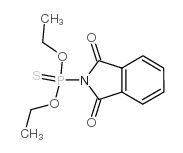
5131-24-8 |
| 文献:Dow Chemical Company Limited Patent: US4204996 A1, 1980 ; |
|
~% 
5131-24-8 |
| 文献:Shaikhiev; Fridland; Mukhutdinova Russian Journal of General Chemistry, 1999 , vol. 69, # 4 p. 557 - 559 |
|
~% 
5131-24-8 |
| 文献:Shaikhiev; Fridland; Mukhutdinova Russian Journal of General Chemistry, 1999 , vol. 69, # 4 p. 557 - 559 |
| 上游产品 4 | |
|---|---|
| 下游产品 4 | |


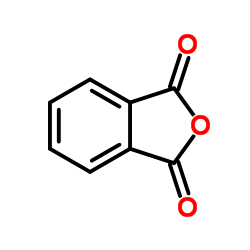
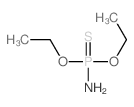
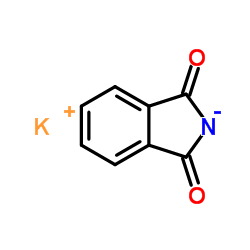
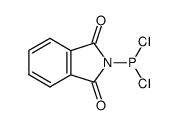
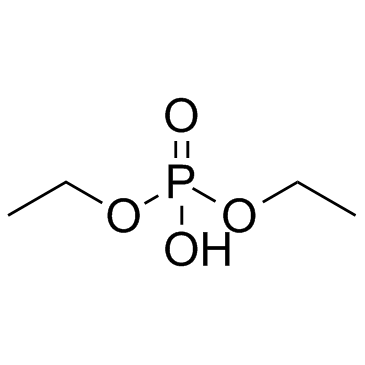


![1-[2-(2-chlorophenoxy)acetyl]piperidine-4-carboxamide结构式](/20230522/5857-62-5.png)





 浙公网安备 33010802013016号
浙公网安备 33010802013016号